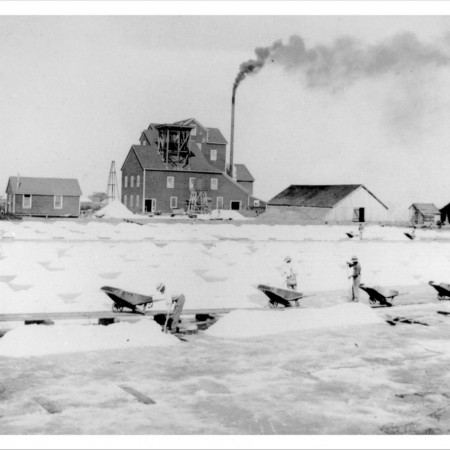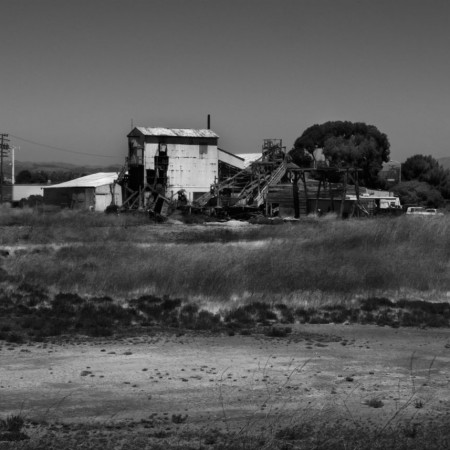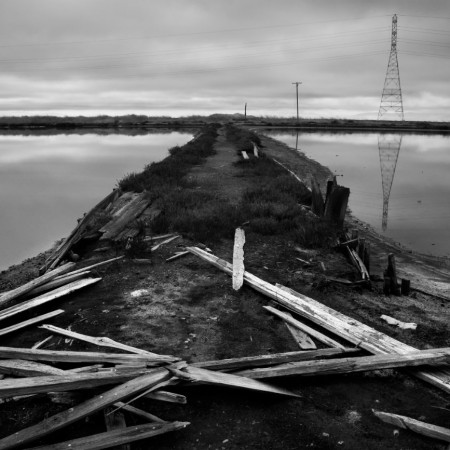A Rephotographic Project
For this exhibit, I was inspired by Third View: A Rephotographic Survey of the American West. Third View was produced between 1997 and 2000 and offered a revision of the original Rephotographic Survey Project of the 1970s. For that project, photographers fanned out across the West in order to re-photograph the views taken a century earlier by the likes of Timothy O’Sullivan and Carleton Watkins. Third View updated the project with a return to the same sites twenty years later, allowing viewers to see just how the landscape has been transformed even further.
Our show was realized through the collaborative efforts of three Hayward-based organizations: the Hayward Area Historical Society, which provided vintage photographs of scenes in Hayward, Castro Valley, and San Lorenzo; the Photo Phantom photography club, whose members re-photographed and re-interpreted those vintage shots; and the students of the Chabot Art Gallery Program, who curated the exhibit under my supervision. Students researched the buildings and places pictured in the vintage photographs, and helped install the exhibit.
Vintage photographs from the Hayward Area Historical Society were given to the members of Photo Phantom with instructions that each photographer go in search of the site depicted. He or she was then to re-shoot the exact same scene, capturing it as it looks in the present day. Thus buildings, street corners, hill views and bay vistas, originally photographed decades ago, were “re-photographed.” When hung side by side, these images allowed us to see in an instant the changes to our area that were wrought over decades.
To add a note of artistic interpretation to the project, the photographers made a final image, inspired by the location but now entirely the product of their own creative impulse, fully expressive of their inner vision. The end result of each effort was a triptych of photographic images, all three focused on a single subject, but all three revealing that subject through time, through different sets of eyes, and through methods both documentary and artistic. These photographs are now in the collection of the Hayward Area Historical Society.
- Original image in the collection of Hayward Area Historical Society, Hayward, CA
- Digital Black and White Print. Copyright Jon Bishofberger, 2007
- Digital Black and White Print, Copyright Jon Bishofberger, 2007.
Photographer Jon Bischofberger was given the vintage photograph of the salt works site near Highway 92 to re-photograph (above left). The plant began operation in 1871 and was run by the Oliver family. The founder of the company was Andrew Oliver, a Swedish immigrant who made his way to California during the exciting years of the Gold Rush. Once settled in the East Bay, Andrew worked for a house moving business and did contracting, which led him to gain enough capital to buy a salt pond claim near Mount Eden in 1871. Over the next decades, several different salt producing plants were erected on the property, but the final plant, built in 1904 (left), had a capacity of fifteen thousand tons per year. Most of the ponds and salt refineries were sold to the Leslie Company in the 1950s.
Bishofberger explained that “finding the exact location proved much harder than I expected. Many of the markers in the original photograph were no longer there.” Using his vintage photograph almost like a map, he said he “allowed the original photo to guide me through the process, showing me where to stand, how much sky to include, where to place the building in the viewfinder’s frame, whether to weight it more to the left or to the right.” His re-photograph (above middle) shows a dilapidated ruin, which makes an interesting contrast to the thriving, productive salt mill of the original photograph taken in the first or second decade of the last century. In Bischofberger’s artistic interpretation, titled Splintered (far right), broken bits of the saltworks lie amidst dark tidal pools, a reminder that nature often outlives our human efforts.


